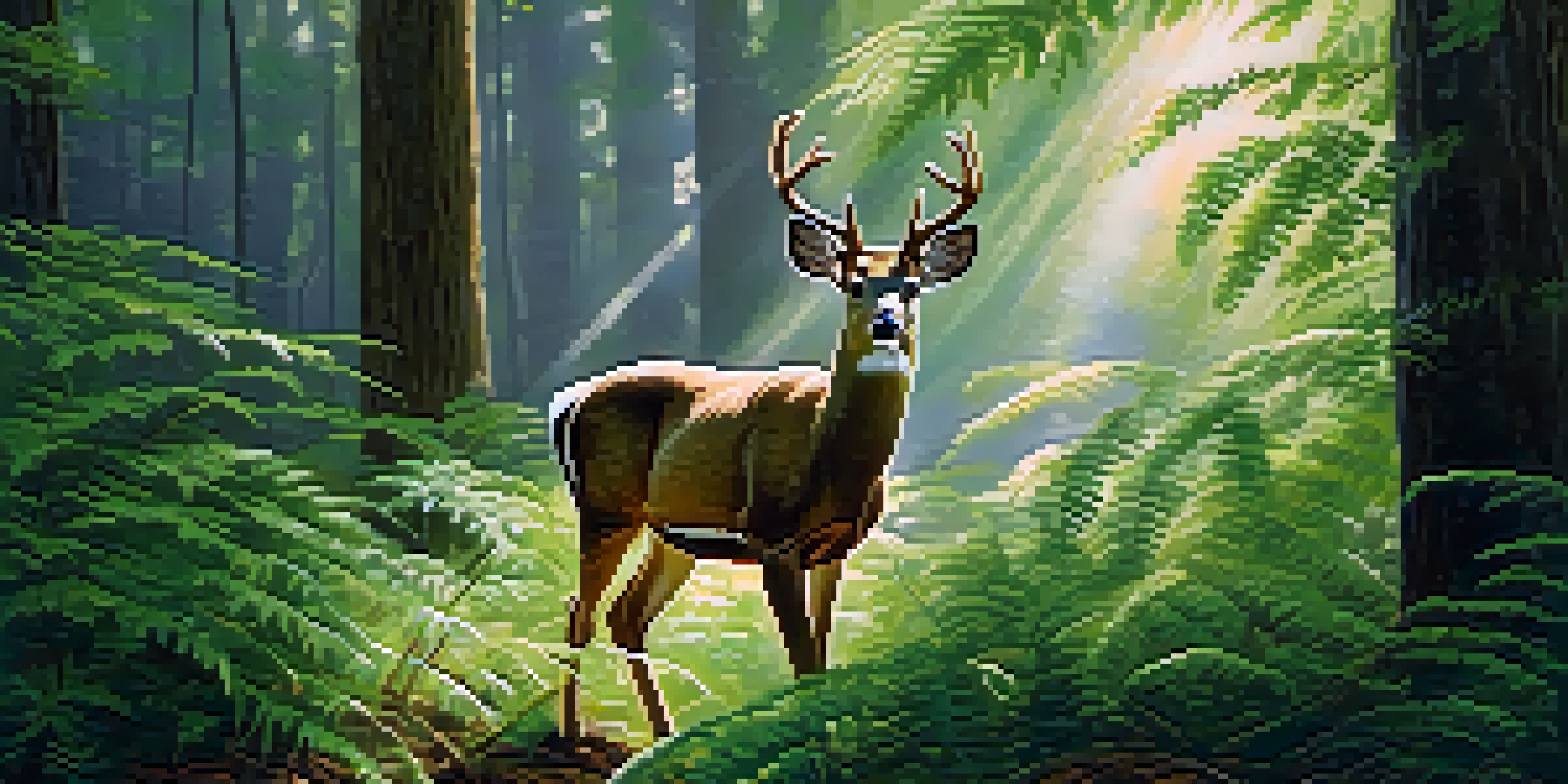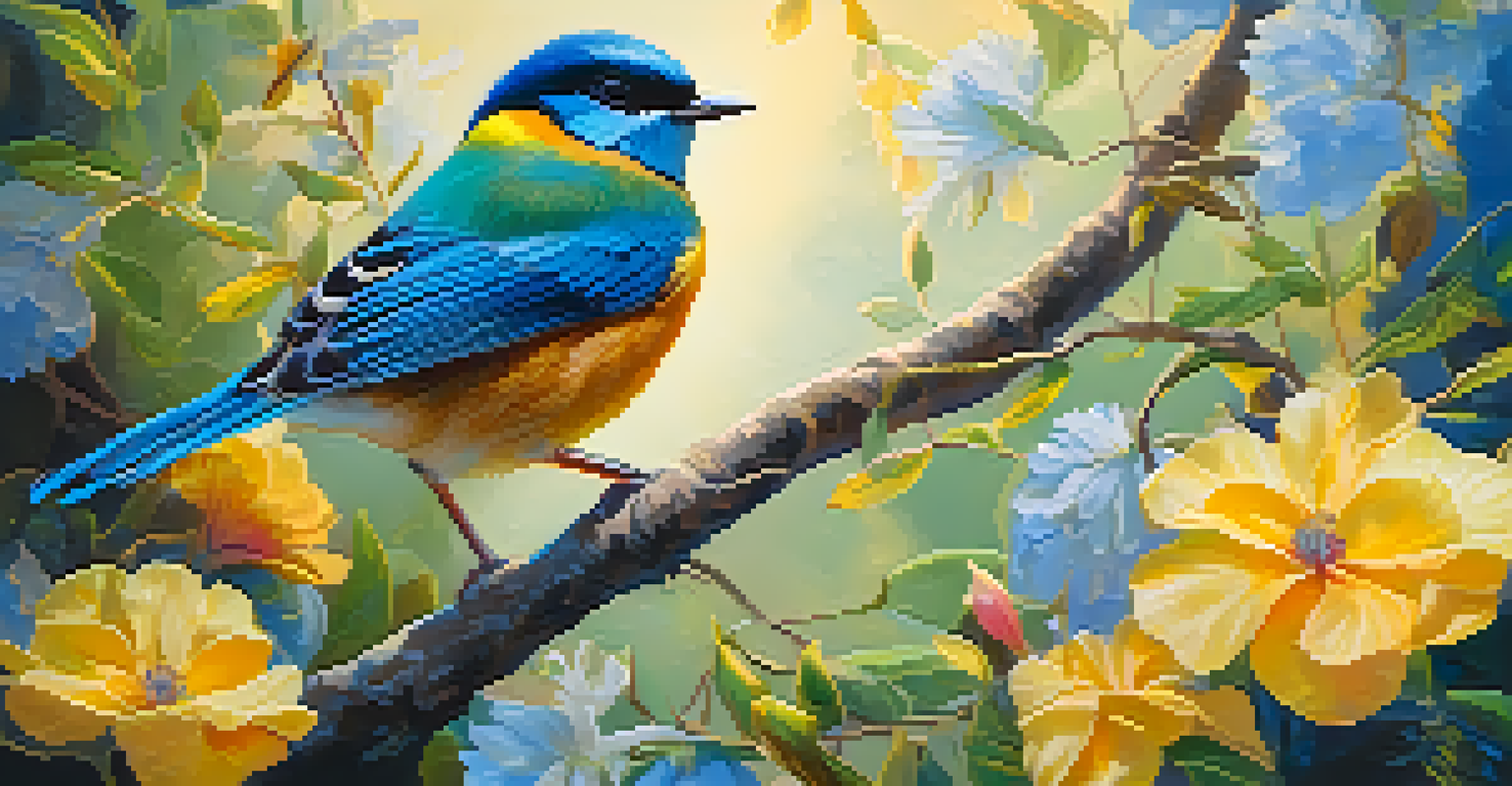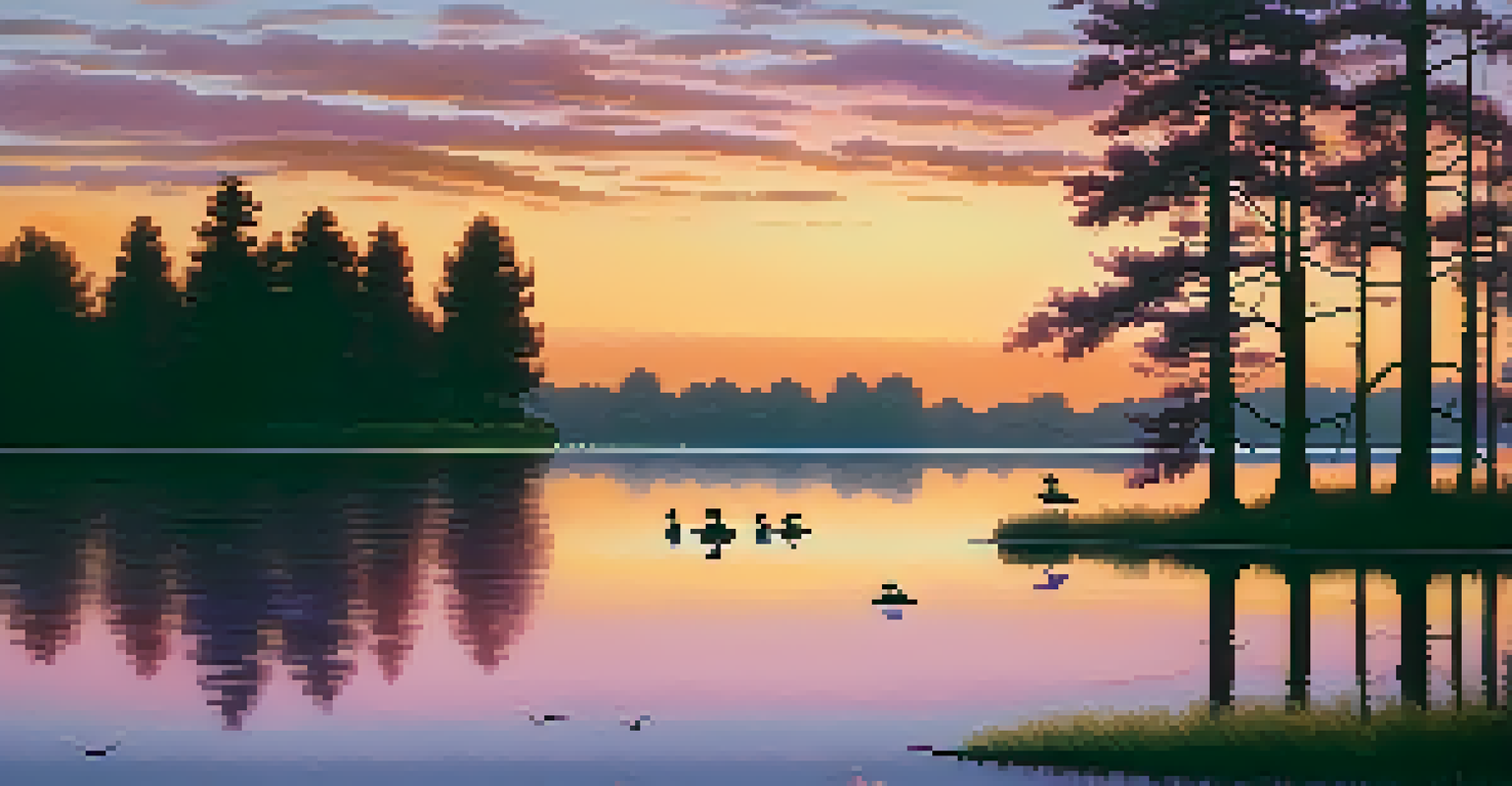Wildlife Photography Ethics: Best Practices for Ecotourists

Understanding Wildlife Photography Ethics
Wildlife photography isn't just about capturing stunning images; it also involves a deep responsibility to the subjects being photographed. Ethical practices ensure that our actions do not disturb wildlife or their habitats. This understanding fosters a respectful relationship between photographers, wildlife, and the environment.
The best way to protect wildlife is to observe it from a distance.
Ethics in wildlife photography are rooted in the principle of minimizing harm. This means being mindful of how our presence can affect animals, particularly in fragile ecosystems. By adhering to ethical standards, we not only protect wildlife but also preserve opportunities for future photographers to enjoy these experiences.
Ultimately, understanding wildlife photography ethics is about promoting sustainability. When photographers commit to responsible practices, they help safeguard the beauty of nature for generations to come. This commitment enriches both the photographer's experience and the well-being of the wildlife being photographed.
Respecting Wildlife Distances
One of the most vital aspects of wildlife photography ethics is maintaining a respectful distance. Approaching animals too closely can cause stress and alter their natural behavior. It’s essential to use telephoto lenses that allow you to capture stunning images without intruding on their space.

Understanding the natural behavior of the species you're photographing can guide your distance. For instance, some animals, like deer, may be more sensitive to human presence than others, such as birds. Familiarizing yourself with their habits can help you anticipate their reactions and photograph them without causing distress.
Ethics Are Key in Wildlife Photography
Understanding and adhering to ethical practices ensures wildlife is respected and protected.
Moreover, a respectful distance can lead to better photographs. When wildlife feels secure, they exhibit more natural behaviors, resulting in authentic and compelling images. In this way, respecting distances not only benefits the animals but also enhances your photographic opportunities.
Minimizing Environmental Impact
Every time we step into nature with our cameras, we must be conscious of our environmental impact. Simple actions, like staying on designated paths and avoiding trampling vegetation, can help preserve delicate ecosystems. By treading lightly, we can ensure that nature remains unspoiled for both wildlife and fellow ecotourists.
Nature does not hurry, yet everything is accomplished.
Additionally, be cautious of litter and waste. Always carry out what you bring in, as litter can harm wildlife and disrupt habitats. This small act of responsibility contributes to the greater good of conservation efforts and demonstrates a commitment to protecting the environment.
Being mindful of your environmental footprint not only aligns with ethical photography practices but also enhances your experience. A cleaner, healthier environment allows for richer interactions with wildlife, creating memorable moments that are both ethically sound and photographically rewarding.
Avoiding Disturbances and Stress to Wildlife
Wildlife can be easily disturbed by loud noises, sudden movements, or invasive actions. As photographers, it’s our duty to minimize these disturbances. Approaching quietly and patiently allows you to blend into the environment, making it less likely that you'll startle the animals.
Using natural cover, like trees or bushes, can help you remain inconspicuous while photographing. This not only reduces stress on the wildlife but also often results in more intimate and engaging shots. The goal is to observe and capture without intruding on their daily lives.
Respect Distance for Better Shots
Maintaining a respectful distance from wildlife minimizes stress on animals and enhances photographic opportunities.
Remember, the most impactful photographs often come from moments when animals feel safe and unbothered. By prioritizing their comfort, you not only uphold ethical standards but also open the door to extraordinary photographic opportunities.
Understanding Seasonal Behavior Patterns
Every species exhibits unique behaviors that can change with the seasons. Understanding these patterns is crucial for ethical wildlife photography. For instance, during mating seasons, animals may be particularly sensitive, so it’s wise to approach with extra caution during these times.
Researching seasonal migratory patterns can also enhance your photography opportunities. Knowing when and where animals are likely to be found allows you to plan your excursions more effectively, minimizing stress on wildlife while maximizing your chances of capturing stunning images.
By aligning your photography with wildlife behavior, you not only enhance your chances of success but also show respect for the natural rhythms of the ecosystem. This awareness fosters a deeper connection with nature and supports ethical practices in wildlife photography.
Sharing Your Work Responsibly
Once you've captured breathtaking images, the responsibility doesn't end there. Sharing your work can inspire others but needs to be done thoughtfully. Avoid disclosing specific locations that could lead to over-tourism or exploitation of wildlife.
By sharing your experiences and insights about ethical practices, you can educate others and promote responsible ecotourism. Highlighting the importance of conservation in your storytelling encourages a wider audience to appreciate and protect wildlife.
Engage with Local Communities
Collaborating with local communities enriches your photography experience while promoting conservation efforts.
Remember, your platform can be a powerful tool for positive change. By advocating for ethical practices through your photography, you contribute to a culture of respect and responsibility, ensuring that wildlife continues to thrive for future generations.
Engaging with Local Communities
Engaging with local communities can enhance your wildlife photography experience while promoting ethical practices. Local guides often have invaluable knowledge about the area and its wildlife, which can help you capture better images while respecting the ecosystem.
Supporting local communities through ecotourism also fosters a sense of stewardship for wildlife. When locals benefit from tourism, they are more likely to engage in conservation efforts, protecting both their environment and the wildlife within it.

By collaborating with local communities, you not only enrich your own experience but also contribute to sustainable practices that benefit everyone involved. This collective effort helps ensure that wildlife photography remains a respectful and thriving endeavor.